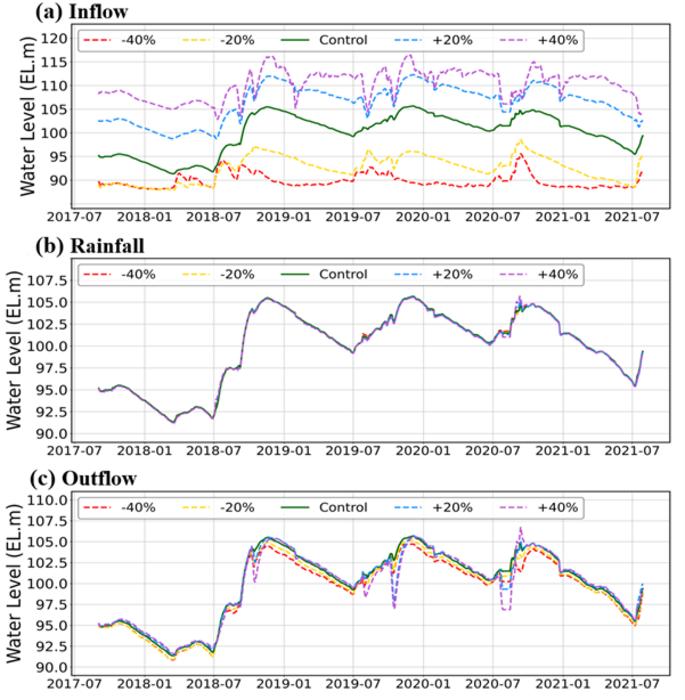In August 2020, following a period of prolonged drought and intense rainfall, a dam situated near the Seomjin River in Korea experienced overflow during a water release, resulting in damages exceeding 100 billion won (USD 76 million). The flooding was attributed to maintaining the dam’s water level 6 meters higher than the norm. Could this incident have been averted through predictive dam management?

Credit: POSTECH
In August 2020, following a period of prolonged drought and intense rainfall, a dam situated near the Seomjin River in Korea experienced overflow during a water release, resulting in damages exceeding 100 billion won (USD 76 million). The flooding was attributed to maintaining the dam’s water level 6 meters higher than the norm. Could this incident have been averted through predictive dam management?
A research team led by Professor Jonghun Kam and Eunmi Lee, a PhD candidate, from the Division of Environmental Science & Engineering at Pohang University of Science and Technology (POSTECH), recently employed deep learning techniques to scrutinize dam operation patterns and assess their effectiveness. Their findings were published in the Journal of Hydrology.
Korea faces a precipitation peak during the summer, relying on dams and associated infrastructure for water management. However, the escalating global climate crisis has led to the emergence of unforeseen typhoons and droughts, complicating dam operations. In response, a new study has emerged, aiming to surpass conventional physical models by harnessing the potential of an artificial intelligence (AI) model trained on extensive big data.
The team focused on crafting an AI model aimed at not only predicting the operational patterns of dams within the Seomjin River basin, specifically focusing on the Seomjin River Dam, Juam Dam, and Juam Control Dam, but also understanding the decision-making processes of the trained AI models. Their objective was to formulate a scenario outlining the methodology for forecasting dam water levels. Employing the Gated Recurrent Unit (GRU) model, a deep learning algorithm, the team trained it using data spanning from 2002 to 2021 from dams along the Seomjin River. Precipitation, inflow, and outflow data served as inputs while hourly dam levels served as outputs. The analysis demonstrated remarkable accuracy, boasting an efficiency index exceeding 0.9.
Subsequently, the team devised explainable scenarios, manipulating inputs by -40%, -20%, +20%, and 40%, of each input variable to examine how the trained GRU model responded to these alterations in inputs. While changes in precipitation had a negligible impact on dam water levels, variations in inflow significantly influenced the dam’s water level. Notably, the identical change in outflow yielded different water levels at distinct dams, affirming that the GRU model had effectively learned the unique operational nuances of each dam.
Professor Jonghun Kam remarked “Our examination delved beyond predicting the patterns of dam operations securitize their effectiveness using AI models. We introduced a methodology aimed at indirectly understanding the decision-making process of AI-based black box model determining dam water levels.” He further stated, “Our aspiration is that this insight will contribute to a deeper understanding of dam operations and enhance their efficiency in the future.”
The research was sponsored by the Mid-career Researcher Program of the National Research Foundation of Korea.
Journal
Journal of Hydrology
DOI
10.1016/j.jhydrol.2023.130177
Article Title
Deciphering the black box of deep learning for multi-purpose dam operation modeling via explainable scenarios
Article Publication Date
26-Sep-2023




